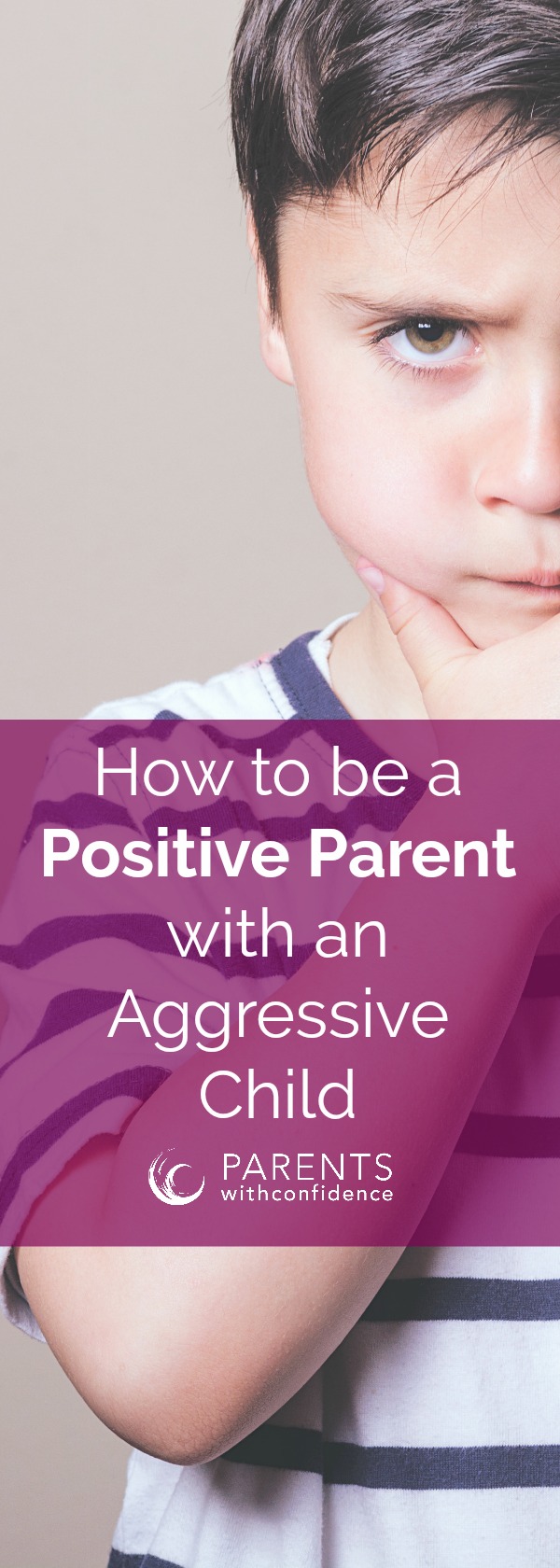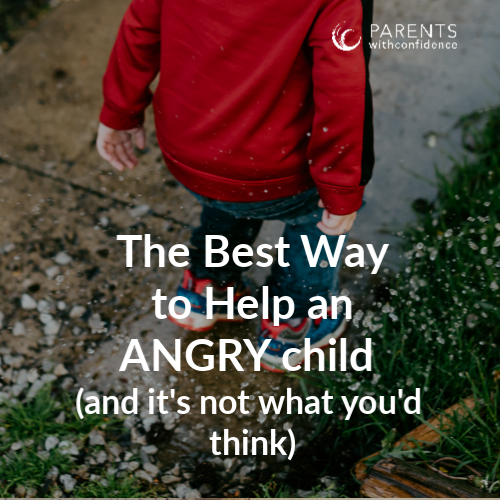How to be a Positive Parent with an Aggressive Child
Inside: Parents will learn how to be a positive parent with an aggressive child and a 5-step plan for handling aggressive behaviors with their child.

This post contains affiliate links that offer a small commission, allowing us to keep the info on raising emotionally healthy kids coming!
I’m excited to share an excerpt from Rebecca Eanes’s new book, The Positive Parenting Workbook. This inspiring and inviting guide walks readers through the process of charting a new path toward greater emotional awareness, clear communication, and joyful parenting! Filled with encouraging prompts and plenty of room to record your progress, this interactive workbook/journal is for anyone who wants to deepen their relationships with their loved ones and learn how to be a positive parent.

When we observe a child behaving aggressively, we often view this behavior as naughty, inconsiderate, or mean. This moves us to want to punish the child’s actions without giving thought to the feelings diving it. When dealing with anger management for kids, it helps to understand that, developmentally, young children cannot feel big emotions and simultaneously think about their actions. This requires left-brain logic to pair with right-brain emotion, and that integration takes time to mature and cannot be punished into a child.
When it comes to how to be a positive parent with aggressive behaviors we need to look behind the aggression. When you do you’ll find a feeling of frustration driving it, and it is addressing the frustration (not punishing the aggression) that helps a child move to good behavior. Many times, we approach disciplining a child in a way that only increases a child’s frustration level, thereby increasing the occurrence of aggression. We think the child is simply pushing back or being obstinate or very unruly which requires even more punishment when in actuality our punishment is fueling the fires we are trying to extinguish.
There are many ways we can help an immature child to manage his behavior during times of frustration until his brain allows for more self-control through positive parenting.
How to be a positive parent with proactivity:
1. Be aware of what you are modeling. If you’re aggressive when agitated or angry, your child will see this as appropriate behavior.
2. Ensure that the discipline you are using isn’t causing anxiety or adding to your child’s frustration. Punishment only adds to the negative feelings that drive poor behavior. Positive parenting discipline means setting clear limits and holding firm to them, with the use of natural consequences.
3. Give plenty of positive attention. Dr. Gordon Neufeld tells us that children “need more from us than they seek.” If we keep their emotional tanks full, they’ll be less frustrated.
>>Related: The 2 Most Important Things to Remember When Parenting a Difficult Child
4. Help your child cry when she is frustrated or upset. When children cry, these negative feelings are discharged through the tears.
5. Help your child build a positive self-image by talking about the good qualities you see in her. Build her up! When helping a child deal with anger don’t use language such as mean, naughty, or aggressive to or in front of her. Remember it’s a lack of maturity that’s the problem, not the child.
6. Give him language for his emotions. Help him to identify his feelings and support him to express himself in a way that doesn’t hurt or harm him, another, or property.
7. Ask your child where she feels frustration and anger in her body. Ask her to draw you a picture to illustrate this. Discuss what emotions feel like when they are just beginning and when they peak and how to recognize them when they are beginning to build.

Positive Parenting tips for when Aggression Happens
My Five Steps to Solution-Oriented Discipline is a good go-to for all behavioral problems you encounter. Let’s go through what these positive parenting skills look like in the moment when your child is aggressive:
Step 1 is looking for the reason behind the behavior. Ask yourself, “What is my child frustrated about right now?” This information will guide your next action. For example, if he’s frustrated because he’s overtired, it may be best to leave the activity and go home or provide some quiet time. If he’s frustrated because he’s not getting his way, the next action is to hold the boundary with empathy.
Step 2 is disciplining yourself. According to a group of parents I surveyed, seeing their children being aggressive was most likely to bring out their own aggression. They tried to help an angry child by becoming verbally or physically aggressive with their kids in order to discipline their aggressive behavior. Bringing your own frustration into the mix isn’t helpful, so discipline yourself first. Remove your child from any harmful situation and take a few moments to collect yourself before you proceed.
>>Related: This is What Happens When you Respond to your Child with Criticism and Shame
Step 3 is connecting with your child, which is part of the most vital positive parenting tip. Again, this isn’t a reward for bad behavior but the avenue through which you can reach his heart. When we understand that empathy, kindness, warmth, and connection are not carrots that can be dangled in front of children, handed out only when they behave to our liking, and provide for the very real emotional needs of a growing, learning, loving human being, we can stop being afraid to show love at all times. You connect by showing regard for their experience, being empathetic to their feelings, and remaining gentle. You can do this while holding whatever boundary you need to hold, and it gets easier with practice.
Step 4 is to seek a solution. Can this particular frustration be avoided? Can you be proactive the next time to provide food or a nap before an outing? What does your child need to learn from this experience? What will help him learn that?
Step 5 is restoring the relationship and your child’s sense of worth along with reconnecting with your little one. Tell her, “You were frustrated today and pushed down your brother. Everyone makes mistakes sometimes. I’m still really proud of the wonderful person you are. You make my heart happy. Do you want to play a game together?”
These positive parenting techniques will help your child gain the skills they need over time.
Check out more in the Rebecca’s Workbook.
Meet the Author:

Rebecca Eanes is a bestselling author, the founder of positive-parents.org, creator of Positive Parenting: Toddlers and Beyond, and a contributing editor to Creative Child Magazine as well as Baby Maternity Magazine. She contributes regularly to Motherly and has been featured at Psychology Today, Mind Body Green, Maria Shriver, The Gottman Institute Blog, Boston Parents Paper, Brightly, and more.
Her newest book The Positive Parenting Workbook is a companion guide to her bestselling Positive Parenting: An Essential Guide.










